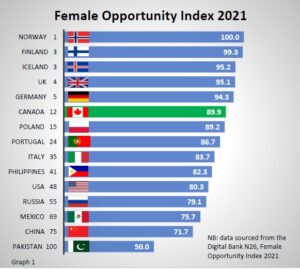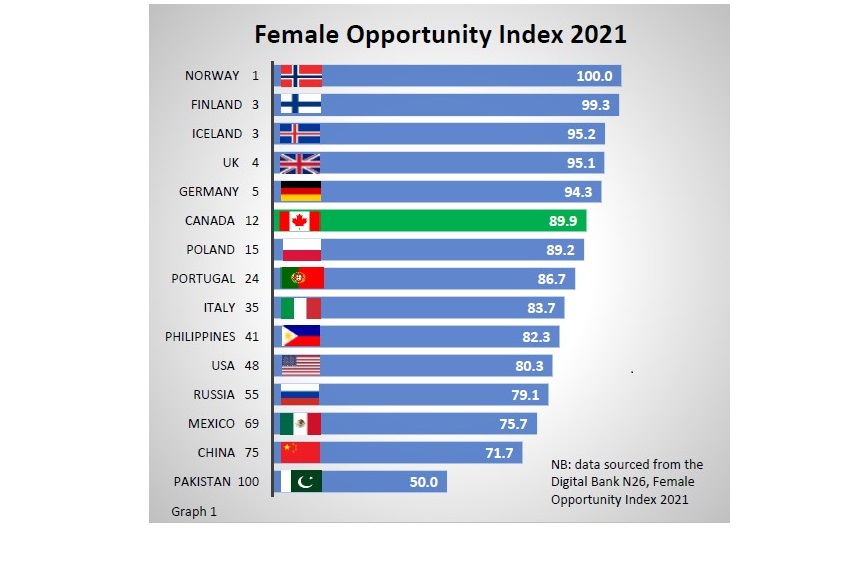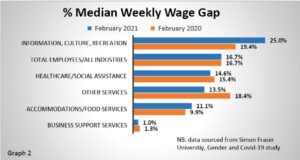Canada ranks #12 globally in the Female Opportunity Index

The impacts of Covid-19 may have prompted a “she-cession” for women around the world. This could negatively impact the gains towards women’s economic empowerment and affect Canada’s ranking at #12 in the Female Opportunity Index 2021.
For more than a year and a half, women have shouldered the uneven burden of care in relation to the Covid-19 pandemic. They have been more likely to have lost their jobs throughout the public health crisis. Typically, it is women who take on the primary role as caregiver and the majority of childcare and education duties at home.
The longer the pandemic lasts, the longer women may continue to be more susceptible to the unequal share of burden. This could damage the progress towards gender equality and stunt further economic growth.
The data-driven study, conducted by the Digital Bank N26, ranked 100 countries around the world with comparable data on women in the workplace. The Corriere Canadese highlighted some of the top-ranking countries several months ago. A more comprehensive graph shows a selection of the top-ranking countries and their scores. (See graph 1 above)
The study focused on several indicators which measured female opportunities and achievements, some of which include, political/corporate leadership, the gender wage gap, access to education and more. Values from each category were tabulated then evaluated to create the final ranking system based on a country’s total score. The highest possible score achieved was 100, the lowest – 50.
Norway ranked #1 with a top score of 100. This does not indicate that the Nordic country is perfect, it is simply in a better position for female opportunities compared to other nations in the Index. It scored high in corporate leadership, political representation, and women’s legislation.
Comparably, Canada is the leading country in North America in terms of female representation in government. It also scored favourably in the level of equitable access to education and in the category of the share of women in management positions. However, the nation still has a way to go in terms of closing the gender wage gap.
According to a Simon Fraser University study, nearly 350,000 Canadian women who had lost their jobs in the wake of Covid-19, had not yet returned to work by February 2021. Further research suggests low wages and the gaps in pay between males and females are contributing factors to women leaving the workforce.
For instance, consider the gender wage gap in occupations impacted by Covid-19. Some of the greatest changes occurred in the fields of information, culture, and recreation. In February 2020, the percentage median weekly wage gap was 19.4%. One year later, that rate increased to 25%. (See graph 2 below)
To address some of these inequities, Canada has committed to measures that ensure women can succeed in Canada and around the world. Part of the strategic Covid-19 recovery plan includes steps to remove barriers that prevent women from participating in the workforce and to improve access to affordable childcare all of which may lead to a stronger, more robust economy.




